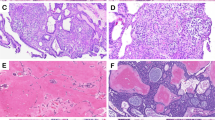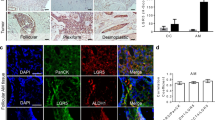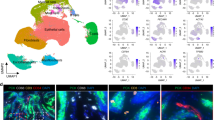Abstract
Here we report the discovery of oncogenic mutations in the Hedgehog and mitogen-activated protein kinase (MAPK) pathways in over 80% of ameloblastomas, locally destructive odontogenic tumors of the jaw, by genomic analysis of archival material. Mutations in SMO (encoding Smoothened, SMO) are common in ameloblastomas of the maxilla, whereas BRAF mutations are predominant in tumors of the mandible. We show that a frequently occurring SMO alteration encoding p.Leu412Phe is an activating mutation and that its effect on Hedgehog-pathway activity can be inhibited by arsenic trioxide (ATO), an anti-leukemia drug approved by the US Food and Drug Administration (FDA) that is currently in clinical trials for its Hedgehog-inhibitory activity. In a similar manner, ameloblastoma cells harboring an activating BRAF mutation encoding p.Val600Glu are sensitive to the BRAF inhibitor vemurafenib. Our findings establish a new paradigm for the diagnostic classification and treatment of ameloblastomas.
This is a preview of subscription content, access via your institution
Access options
Subscribe to this journal
Receive 12 print issues and online access
$209.00 per year
only $17.42 per issue
Buy this article
- Purchase on Springer Link
- Instant access to full article PDF
Prices may be subject to local taxes which are calculated during checkout




Similar content being viewed by others
Accession codes
Change history
12 November 2014
In the version of this article initially published, the introductory paragraph mistakenly stated that ameloblasts were "cells in the tooth roots of the upper (maxilla) and lower (mandible) jaw responsible for depositing enamel during tooth development (odontogenesis)." The correct location for human ameloblasts is in the developing tooth. Ameloblasts are the normal cell type that ameloblastoma cells resemble and are responsible for forming the enamel covering on tooth crowns. The error has been corrected in the HTML and PDF versions of the article.
References
Gorlin, R.J. et al. Odontogenic tumors. Classification, histopathology, and clinical behavior in man and domesticated animals. Cancer 14, 73–101 (1961).
Sweeney, R.T. et al. Desktop transcriptome sequencing from archival tissue to identify clinically relevant translocations. Am. J. Surg. Pathol. 37, 796–803 (2013).
Tucker, A. et al. The cutting-edge of mammalian development; how the embryo makes teeth. Nat. Rev. Genet. 5, 499–508 (2004).
Davies, H. et al. Mutations of the BRAF gene in human cancer. Nature 417, 949–954 (2002).
Parada, L.F. et al. Cooperation between gene encoding p53 tumour antigen and ras in cellular transformation. Nature 312, 649–651 (1984).
Li, Y. et al. Activation of FGF receptors by mutations in the transmembrane domain. Oncogene 14, 1397–1406 (1997).
Xie, J. et al. Activating Smoothened mutations in sporadic basal-cell carcinoma. Nature 391, 90–92 (1998).
Clark, V.E. et al. Genomic analysis of non-NF2 meningiomas reveals mutations in TRAF7, KLF4, AKT1, and SMO. Science 339, 1077–1080 (2013).
Taipale, J. et al. Effects of oncogenic mutations in Smoothened and Patched can be reversed by cyclopamine. Nature 406, 1005–1009 (2000).
Nakata, A. et al. Establishment and characterization of a spontaneously immortalized mouse ameloblast-lineage cell line. Biochem. Biophys. Res. Commun. 308, 834–839 (2003).
Wang, C. et al. Structure of the human smoothened receptor bound to an antitumour agent. Nature 497, 338–343 (2013).
Harada, H. et al. Establishment of ameloblastoma cell line, AM-1. J. Oral Pathol. Med. 27, 207–212 (1998).
Søndergaard, J.N. et al. Differential sensitivity of melanoma cell lines with BRAFV600E mutation to the specific Raf inhibitor PLX4032. J. Transl. Med. 8, 39 (2010).
Yang, H. et al. Antitumor activity of BRAF inhibitor vemurafenib in preclinical models of BRAF-mutant colorectal cancer. Cancer Res. 72, 779–789 (2012).
Dassule, H.R. et al. Sonic hedgehog regulates growth and morphogenesis of the tooth. Development 127, 4775–4785 (2000).
Kumamoto, H. et al. Expression of Sonic hedgehog (SHH) signaling molecules in ameloblastomas. J. Oral Pathol. Med. 33, 185–190 (2004).
Heikinheimo, K. et al. Gene expression profiling of ameloblastoma and human tooth germ by means of a cDNA microarray. J. Dent. Res. 81, 525–530 (2002).
Kurppa, K.J. et al. High frequency of BRAF V600E mutations in ameloblastoma. J. Pathol. 232, 492–498 (2014).
Chiang, C. et al. Essential role for Sonic hedgehog during hair follicle morphogenesis. Dev. Biol. 205, 1–9 (1999).
Schneider, M.R. et al. The hair follicle as a dynamic miniorgan. Curr. Biol. 19, R132–R142 (2009).
Iwasaki, J.K. et al. The molecular genetics underlying basal cell carcinoma pathogenesis and links to targeted therapeutics. J. Am. Acad. Dermatol. 66, e167–e178 (2012).
Fontebasso, A.M. et al. Chromatin remodeling defects in pediatric and young adult glioblastoma: a tale of a variant histone 3 tail. Brain Pathol. 23, 210–216 (2013).
Kim, J. et al. Arsenic antagonizes the Hedgehog pathway by preventing ciliary accumulation and reducing stability of the Gli2 transcriptional effector. Proc. Natl. Acad. Sci. USA 107, 13432–13437 (2010).
Kim, J. et al. Itraconazole and arsenic trioxide inhibit Hedgehog pathway activation and tumor growth associated with acquired resistance to smoothened antagonists. Cancer Cell 23, 23–34 (2013).
Sciubba, J.J. et al. Atlas of Tumor Pathology 29, 71–84 (Armed Forces Institute of Pathology, Washington, DC, 2001).
Morlan, J.D. et al. Selective depletion of rRNA enables whole transcriptome profiling of archival fixed tissue. PLoS ONE 7, e42882 (2012).
Langmead, B. et al. Fast gapped-read alignment with Bowtie 2. Nat. Methods 9, 357–359 (2012).
Kim, D. et al. TopHat-Fusion: an algorithm for discovery of novel fusion transcripts. Genome Biol. 12, R72 (2011).
Goya, R. et al. SNVMix: predicting single nucleotide variants from next-generation sequencing of tumors. Bioinformatics 26, 730–736 (2010).
Wang, K. et al. ANNOVAR: functional annotation of genetic variants from high-throughput sequencing data. Nucleic Acids Res. 38, e164 (2010).
Douville, C. et al. CRAVAT: cancer-related analysis of variants toolkit. Bioinformatics 29, 647–648 (2013).
Asmann, Y.W. et al. A novel bioinformatics pipeline for identification and characterization of fusion transcripts in breast cancer and normal cell lines. Nucleic Acids Res. 39, e100 (2011).
McPherson, A. et al. deFuse: an algorithm for gene fusion discovery in tumor RNA-Seq data. PLoS Comput. Biol. 7, e1001138 (2011).
Iyer, M.K. et al. ChimeraScan: a tool for identifying chimeric transcription in sequencing data. Bioinformatics 27, 2903–2904 (2011).
Untergasser, A. et al. Primer3—new capabilities and interfaces. Nucleic Acids Res. 40, e115 (2012).
Myers, B.R. et al. Hedgehog pathway modulation by multiple lipid binding sites on the smoothened effector of signal response. Dev. Cell 26, 346–357 (2013).
Acknowledgements
We would like to thank E. Epstein for assistance. We would like to thank C. Millward, H. Kaplan and M. Labusch for histology and pathology support. We are also grateful to H. Harada (Iwate Medical University) for sharing the AM-1 cell line.
Author information
Authors and Affiliations
Contributions
R.T.S., A.C.M., J.R.P. and R.B.W. designed the study and wrote the manuscript. A.C.M., B.R.M., J.R.P. and R.B.W. designed the figures. R.T.S., X.G., J.R.P. and R.B.W. analyzed raw sequence data. J.B. and J.R.P. performed mutation validation (PCR and Sanger sequencing). B.R.M., L.N., J.B., J.R.P. and P.A.B. designed and implemented functional studies. C.D.J., J.I.O. and J.L.Z. performed targeted sequencing (TruSeq). K.A.K., K.Q. and R.J.P. performed transcriptome sequencing. S.V. performed immunohistochemistry. T.N., B.P.R. and M.L.T. provided cases for evaluation. T.S. and S.K. provided key cell line reagents.
Corresponding authors
Ethics declarations
Competing interests
The authors declare no competing financial interests.
Integrated supplementary information
Supplementary Figure 1 Representative Sanger tracings for mutations.
(a) Tracing for representative SMO mutation encoding L412F in ameloblastoma and matched normal tissue. (b) Tracing for representative BRAF mutation encoding V600E in ameloblastoma and matched normal tissue.
Supplementary Figure 2 Expression of BRAF V600E protein.
The four cases evaluated with BRAF mutations encoding V600E show diffuse cytoplasmic staining of the epithelial component with antibody to BRAF V600E. (a) Rare, patchy staining is observed. (b–d) Darker staining, and greater cell density, is seen at the leading edge of the epithelial cell component, adjacent to the stroma. The stroma is completely negative. No staining was seen in 15 cases without the mutation encoding V600E (data not shown).
Supplementary Figure 3 Suppression of activity of SMO mutants by Ptch1 overexpression.
Relative GLI-dependent luciferase assays in ShhN-stimulated Smo–/– MEFs expressing wild-type SMO, SMO L412F, SMO W535L or GFP control, with or without engineered overexpression of Ptch1, show significant suppression of the activity of the SMO mutants by Ptch1. Each data point is based on three independent transfections (three biological replicates); error bars, s.d. Results presented for each experiment are representative of multiple independent trials.
Supplementary information
Supplementary Text and Figures
Supplementary Figures 1–3 and Supplementary Table 2 (PDF 1443 kb)
Supplementary Table 1
Clinical features and mutation status of cases. (XLSX 15 kb)
Rights and permissions
About this article
Cite this article
Sweeney, R., McClary, A., Myers, B. et al. Identification of recurrent SMO and BRAF mutations in ameloblastomas. Nat Genet 46, 722–725 (2014). https://doi.org/10.1038/ng.2986
Received:
Accepted:
Published:
Issue Date:
DOI: https://doi.org/10.1038/ng.2986
This article is cited by
-
Ameloblastic carcinoma of the mandible: a case report
Maxillofacial Plastic and Reconstructive Surgery (2023)
-
A network meta-analysis assessing the effectiveness of various radical and conservative surgical approaches regarding recurrence in treating solid/multicystic ameloblastomas
Scientific Reports (2023)
-
A Systematic Review of Adenoid Ameloblastoma: A Newly Recognized Entity
Head and Neck Pathology (2023)
-
Proceedings of the 2023 North American Society of Head and Neck Pathology Companion Meeting, New Orleans, LA, March 12, 2023: Odontogenic Tumors: Have We Achieved an Evidence-Based Classification
Head and Neck Pathology (2023)
-
Ligand-based 3D pharmacophore modeling, virtual screening, and molecular dynamic simulation of potential smoothened inhibitors
Journal of Molecular Modeling (2023)



